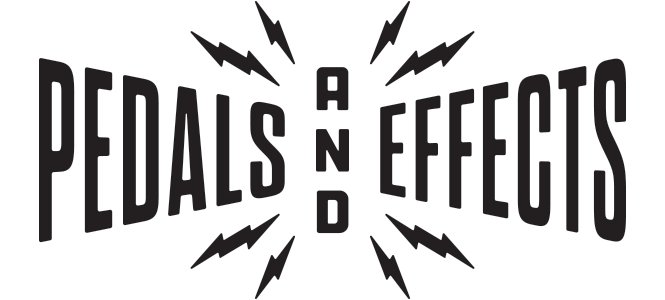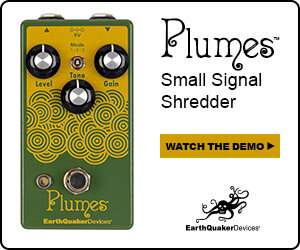Show Me Your Pedalboard: Admar
/We’re back with Show Me Your Pedalboard, where I call on the Pedals And Effects community to send in a picture of their boards for an open discussion. Admar sent his picture of a very neatly organized pedalboard, chained much differently than what we’ve seen before.
Admar starts his signal off with an EBS Octabass followed by some dirt from three different distortion options. If you are a fan of Pedals And Effects, you might know that I never put the octave or the sub pedals at the beginning. When you put something that increases your dynamic range before a distortion, overdrive or fuzz, you compresses your dynamic range and ultimately take away what makes that octave pedal special. Your sub or octave drops are not going to be as big as the pedal was designed to make them. Admar’s pedalboard continues with EarthQuaker Devices’ Speaker Cranker, which is a tube-like overdrive with a mild boost, and also has the MXR Bass Overdrive. Blackout Effectors’ Musket Fuzz comes right after. Clearly, Admar loves his bass dirty and wants keep his option numerous, but with so many similar pedals he’s much more likely to expand his tone by placing at least one of these dirt pedals before the Octabass. Of these three, I personally would place the Musket Fuzz first in the chain to create a fuzzed out bass tone and still throw a huge low end sound over it.
Next comes the MXR Bass DI+. Direct inputs can be placed in several parts of a chain, depending on its purpose or personal preference. In this case, Admar explained with his picture that he primarily uses the MXR Bass DI+ for mild distortion, in this sequence. The MXR Bass Auto Q follows, which is an envelope filter based off the Dunlop 105Q Bass Wah. Usually, I have fuzzes and distortions after my wah pedals to avoid feedback, but considering that this is not a straightforward wah, Admar may not have to worry about this problem.
After this come multiple discontinued modulation effects from Ibanez. First is the SB7 Bass Synth, CF7 Chorus/Flanger, followed by the PM7 phase pedal. These pedals are decent modulators available at a relatively cheap price if you can find them on Reverb or eBay. The last effect is Way Huge’s Ringworm. This is a classic ring modulator that sounds similar to the noises you heard in old spacey TV shows. It splits your signal and creates different modulation patterns between the signals.
Admar ends his chain with a Fulltone Fat Boost pedal which can be very effective after modulators, like the Way Huge Ringworm. He also has the option of using the Fat Boost to add distortion after the phase, flange, and chorus effects.
I love how organized and uncluttered this pedalboard is, which can help during live settings. I also appreciate Admar’s love for distorted tones, but with so many options, I would separate these pedals further away from each other. I’d like to thank Admar for sharing his board, and let him and I know what you think in the comment section below.
All of these pedals, and more are available at Reverb.com!
Haven’t sent a photo of your pedalboard? Don’t wait and email a photo to juan@pedalsandeffects.com.
-Juan











